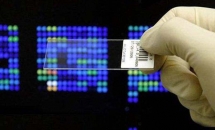For many years now, brain diseases have been recognised as representing a major economic expense for advanced societies. A recent study by the European Brain Council (Smith, Nature 2011) estimates that the cost of brain diseases in the Europe of the 27 nations amounts to almost €800 million a year. This figure includes both the direct costs (medicines, treatment, etc) and the indirect costs (days off work, impact on the family environment, etc) of a wide range of neurological and psychiatric illnesses, as well as other problems deriving from brain malfunction (migraines, addictions, tumours, etc).
Psychiatric illnesses are responsible for one third of this amount, with depression heading the list, followed by anxiety disorders and psychotic disorders (schizophrenia and related syndromes). Depression affects a very high percentage of the population. According to data from the World Health Organisation, one in every five women and one in every 10 men will suffer from an episode of depression during the course of their lives. Depression is characterised by a wide variety of symptoms, including loss of interest in habitual activities, the inability to experience pleasure, feelings of guilt and low self-esteem, uncontrollable suffering and weeping, sleep and eating disorders, anxiety, difficulties in concentration and memory problems, etc. Depression is commonly treated with drugs, which are only effective in two-thirds of patients after prolonged treatments (months). The patients who do not respond to different treatment strategies represent an enormous problem owing to their tendency to commit suicide due to the great mental suffering they experience.
Over the past 20 years, several cerebral areas have been identified that are involved in the physiopathology of depression. One of these is part of the prefrontal cortex, the ventral cingulate cortex (VCC), the function of which appears to be increased in groups of patients that do not respond to habitual treatments. This is a key area in the brain’s functions and very probably alteration of same results in a whole range of alterations in other cerebral areas which are the ones responsible for various depressive symptomatologies. The importance of cerebral circuits originating in VCC is demonstrated by the fact that high-frequency stimulation of same has anti-depressive effects in patients who do not respond to any other treatment.
As for schizophrenia, this is an illness with an unknown aetiology and a much worse prognosis than depression, given that its treatment is purely symptomatic, using antipsychotic drugs, which are only effective in the so-called "positive" symptoms of schizophrenia (agitation, uncontrolled speaking and thinking, violent behaviour, hallucinations, etc.). Other symptoms, specifically the negative ones (anxiety, depressive feelings, social isolation, etc.) and cognitive problems have no suitable treatment. Cerebral alterations in schizophrenia are considerably more complex than in depression, as a large number of areas and cerebral circuits are involved, though the prefrontal cortex is also an important factor here.
As a result of studies with neuroimaging techniques, as well as the numerous studies with animal experiments currently in progress, we will be able to identify cellular and neurochemical elements in the not-too-distant future, which will mean that new medicines can be developed to provide better treatment for these two psychiatric illnesses that have such an enormous impact on society.
Cycle: Challenges of the 21St Century the Voice of Medicine, III
Organized by: Residence for Researchers. THEY CALLABORATE:Fundació Clínic Barcelona, IDIBAPS, RESA and Col·legi Oficial de Metges de Barcelona
